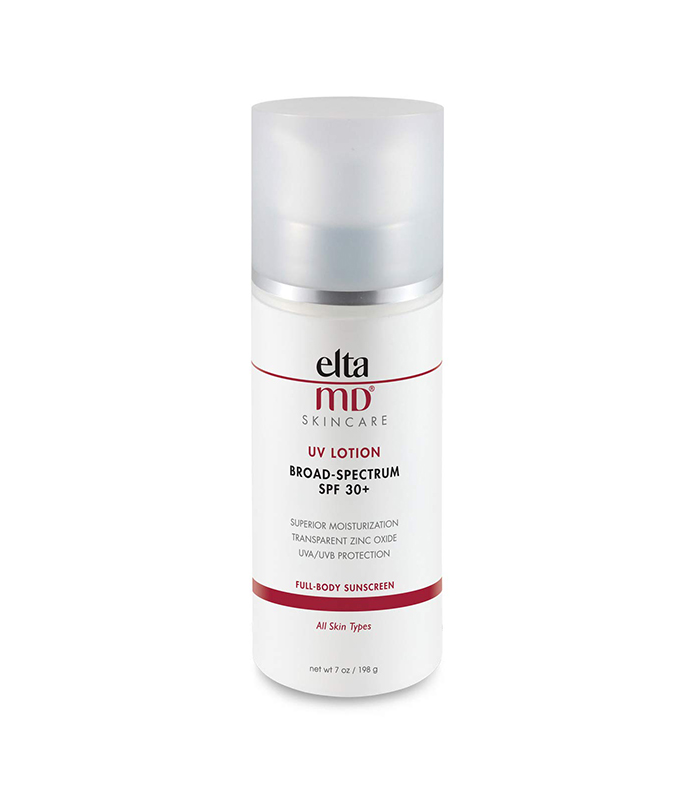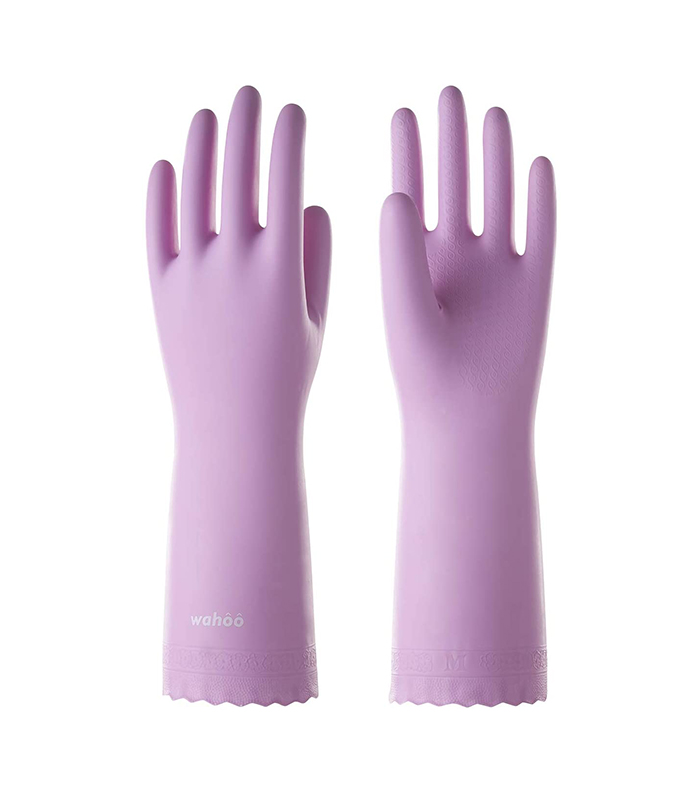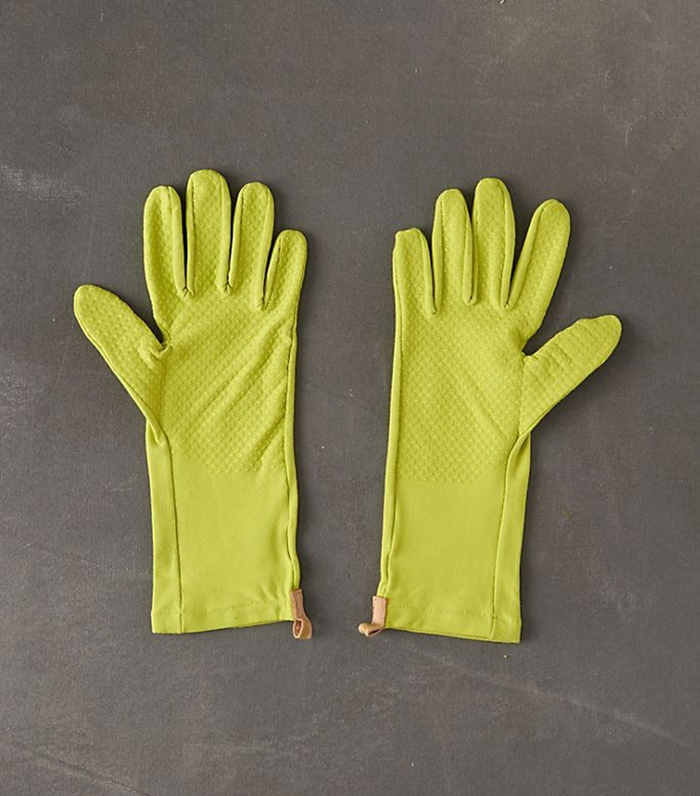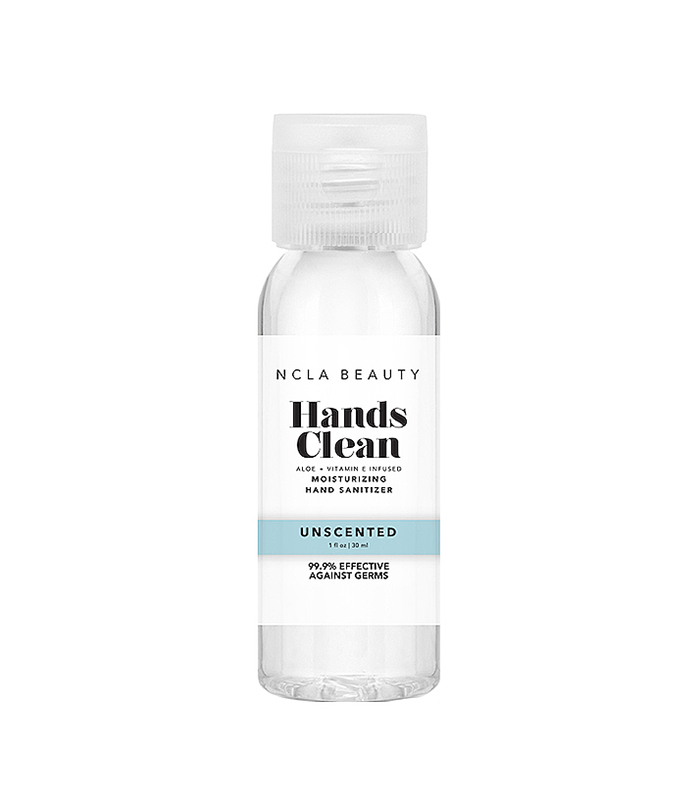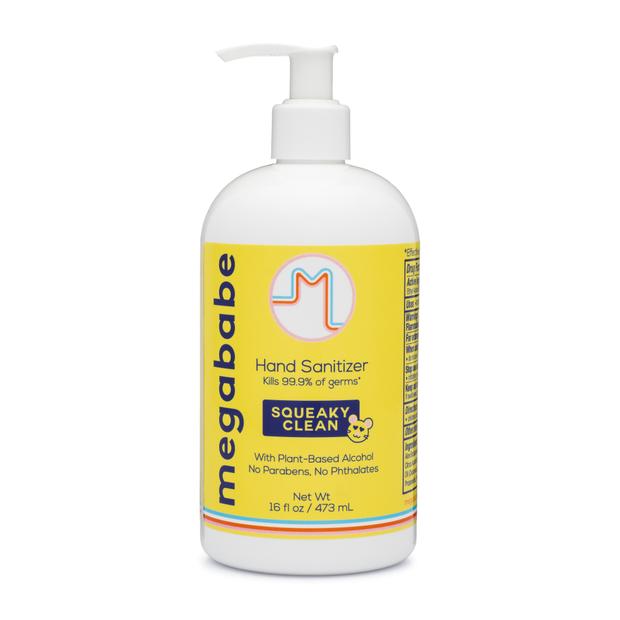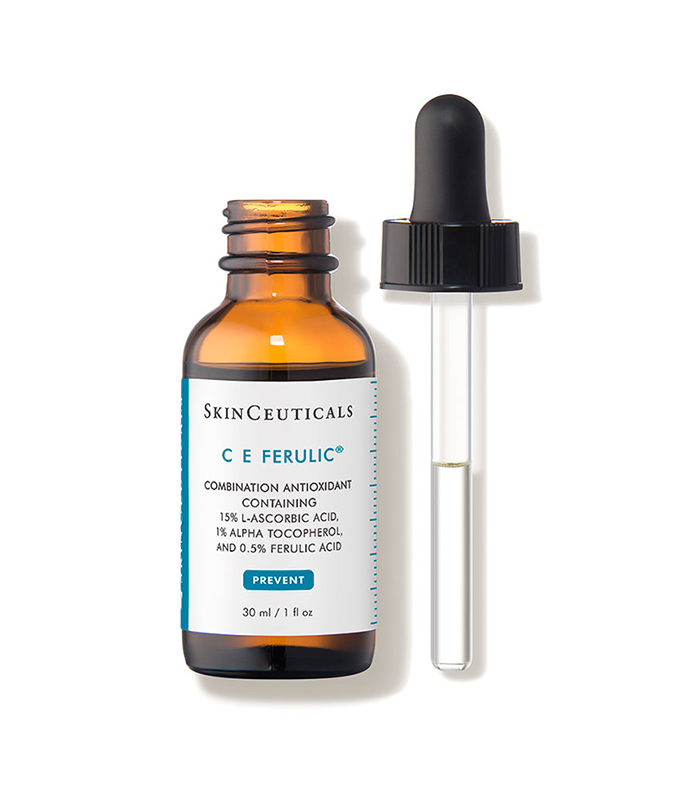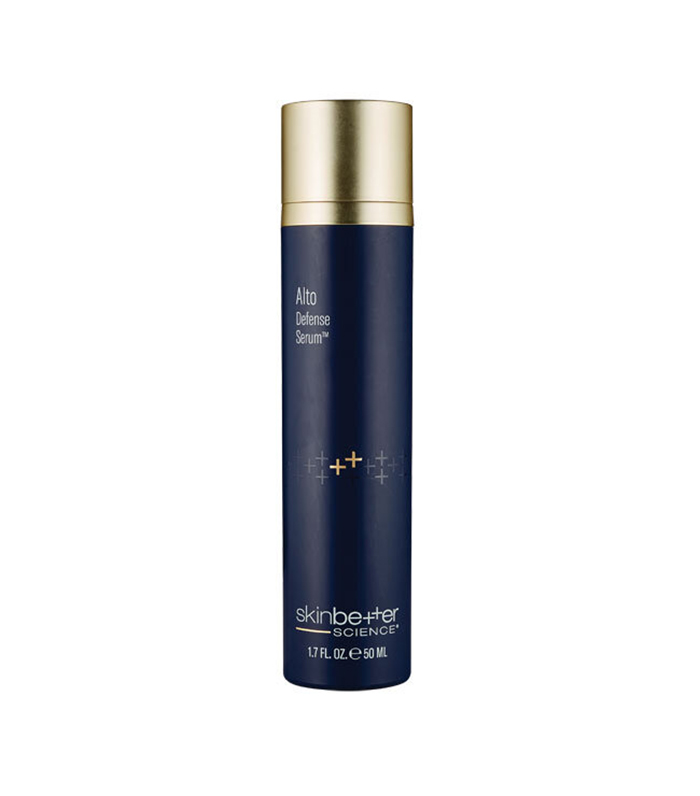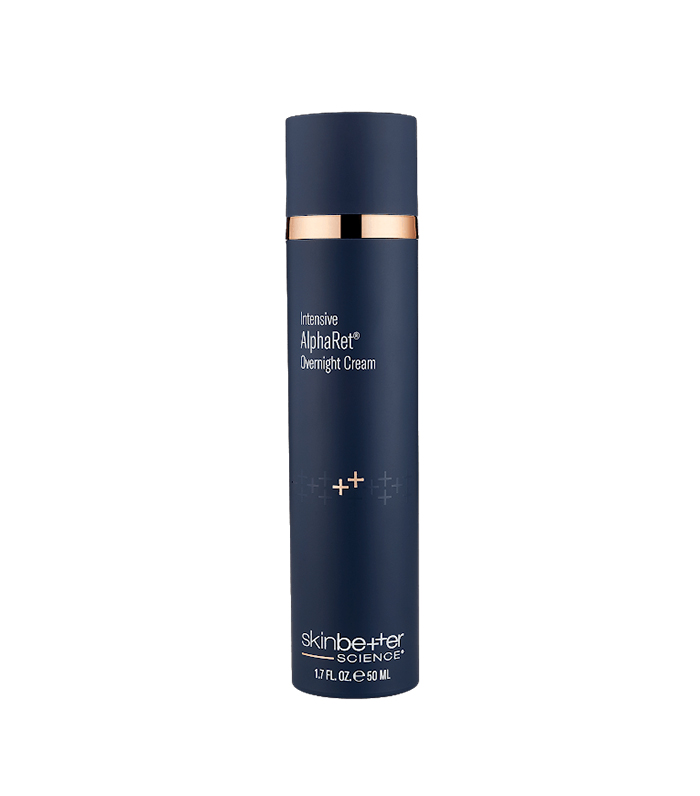This Part of Your Body Ages Faster Than Your Face—Here's How to Fix the Damage
So here's a truth I learned recently that may shock you, too: The skin on our hands is even more delicate the skin on our face. I never really thought too much about that because I always thought skin's skin, whether it's on my face, hands, legs, feet, etc. But this new-to-me revelation made sense. My hands have always been a problem area for my eczema, and our hands do get a lot more wear and tear than our faces.
"The skin on your hands has less oil (sebaceous) glands than the face," explains Robyn Gmyrek, MD, a board-certified dermatologist at Union Square Laser Dermatology. "These glands make oil (or sebum), which is protective and prevents dryness. These glands also are important reservoirs of important cells, which help heal the skin—so fewer of these and the hand skin is less tolerant of injury and heals more slowly. And finally, the face has better blood circulation overall than the hands. The better the blood flow, the better the healing and the delivery of nutrients to the skin, which is vital."
And that's not all. The skin on our hands actually ages faster. A lot of it has to do with the reasons above, but Gmyrek adds that it's also because hands are not protected by clothing or makeup daily like other parts of your body and face. "Even when sunscreen is applied, it is often washed off when the hands are cleansed and not reapplied. Sunlight exposure is responsible for estimates of 80% of skin aging," she says.

How to Protect Your Hands
While our hands are on the more delicate side, there are plenty of ways to protect them from additional damage. Gmyrek shared a few tips:
Apply Sunscreen
This one isn't a surprise, but it's still important—sunscreen should be the MVP in your beauty cabinet or makeup bag. "There are innumerable studies showing that ultraviolet light causes a premature breakdown of collagen and elastic tissue leading to crepey skin," Gmyrek says. "We also have a plethora of scientific evidence that ultraviolet light causes DNA damage leading to skin cancers. The face, forearms, and tops of the hands are the places that I most commonly see non-melanoma skin cancers like basal cell carcinoma and squamous cell carcinoma."
When choosing a sunscreen, she advises to look for SPF 30 or higher, and it should be labeled "broad-spectrum," which means it protects against UVA and UVB light.
Wear Gloves
Your hands do a lot of work, and while you may not wear gloves all the time, it's important to protect them when you're doing certain tasks. Gmyrek recommends wearing them when you're outside for an extended period of time (like gardening or golfing); when you're cleaning or using any chemical products that can damage sensitive skin; and to prevent injury doing certain tasks, as hand skin takes longer to heal and is more apt to scar.
Wash and Sanitize Your Hands
Hand hygiene is essential. "If you can opt for soaps or cleansers which are labeled 'moisturizing' or alcohol-free, do so," Gmyrek says. "This goes for hand sanitizers as well. But don't compromise hygiene! Immediately after washing, apply a moisturizer. Use a cream or an ointment over a lotion. Lotions are thinner and have more water or alcohol than creams or ointments."
Start a Hand-Care Routine
When choosing a hand cream, Gmyrek recommends looking for these two things:
Hydration and healing skin barrier: Hyaluronic acid, shea butter, argan oil, almond oil, ceramide, and colloidal oatmeal.
Removal of dry, dull dead skin cells: Salicylic acid creams or lactic acid creams such as AmLactin cream (lactic acid) or Gold Bond Psoriasis Relief cream (even if you don't have psoriasis, it contains 3% salicylic acid).
And as you have a skincare routine for your face, it can also help to have one for your hands. "Apply an antioxidant serum or cream in the morning followed at least five minutes later by moisturizing sunscreen SPF 30 or more that is broad-spectrum," Gmyrek says. "Throughout the day, reapply moisturizing sunscreen after washing and every two to four hours. At night, wash hands with a gentle cleanser and apply a retinol (vitamin A) containing cream at night. Wait 10 minutes and apply a moisturizing cream—if possible, one that is thicker than you might use in the day."
Gmyrek also adds that you can use the same antioxidant you use on your face if it's not too irritating, which you might need to test out first. She's recommended SkinCeuticals' C E Ferulic Acid or SkinBetter Alto Defense Serum to her patients. "Retinols I recommend for night are Topix Concentrated Retinol Serum or SkinBetter AlphaRet cream," she says. "Start only three times per week (Monday, Wednesday, and Friday) and increase a day per week until you are at every night. If irritation occurs, discontinue and try a weaker retinol or a serum or cream with bakuchiol, a plant-derived retinol alternative which also stimulates collagen and elastic tissue."
How to Reverse Aging on the Hands

If you are experiencing the signs of aging on your hands, Gmyrek outlined the common signs below and treatments for each:
Thin, Crepey, or Tissue Paper–like Skin: "This is due to collagen, elastin, and hyaluronic acid loss. Topical creams should be used. I recommend using a serum or cream with antioxidants like vitamin C to help stimulate new collagen and protect against ongoing damage in the morning. Then apply sunscreen as stated above. Reapply every two hours and after you wash. Wear even if you are indoors as UVA light comes right through window glass. In the evening, I recommend a vitamin A cream—retinol, retinoid, or bakuchiol, which will help to stimulate new collagen and thicken the skin. These should always be used at night as sunlight inactivates vitamin A products. This should be followed after waiting at least 10 minutes by a moisturizing cream.
"Lasers are very helpful, too. Fractionated resurfacing lasers are my go-to treatment in the office for stimulating new collagen and elastic tissue. These lasers create controlled, microscopic wounds in the skin. As the skin heals, it creates new collagen and elastic tissue. Multiple treatments are needed (five or so), and I only recommend going to a board-certified dermatologist who has been trained in the use of lasers."
Brown Spots or Discoloration: "Topical creams containing hydroquinone or other bleaching agents such as tranexamic acid, kojic acid, or propionic acid can be helpful. Often these brown spots will not respond to topical treatments and require an in-office treatment to be removed.
"Lasers such as the intense pulsed light (IPL) or the Alexandrite laser are go-to treatments in the office. These lasers use specific wavelengths of light to target and remove the discolored spots on the hand. Usually two to five treatments are needed."
Subcutaneous Fat Loss: "This is part of the natural aging process, and topical creams will not help this. Filler injections are my go-to in the office to create more fill in the hands. This improves the appearance of the hands by supporting the skin a bit and thereby making it appear tighter and also by hiding the veins of the hands a bit which become very prominent when fat is lost."
The Best Anti-Aging Hand Creams
Trying out a topical cream can be a good place to start if you're looking for something to protect, preserve, or heal your skin. We've rounded up some of Gmyrek's and our favorites below:

Gmyrek recommends this for daytime, everyday use. "It has SPF 30 with broad-spectrum coverage, and it is moisturizing but not too greasy," she explains. "Buy a few, keep them everywhere, home, car, office, work, pocketbook—you will be more likely to use it.
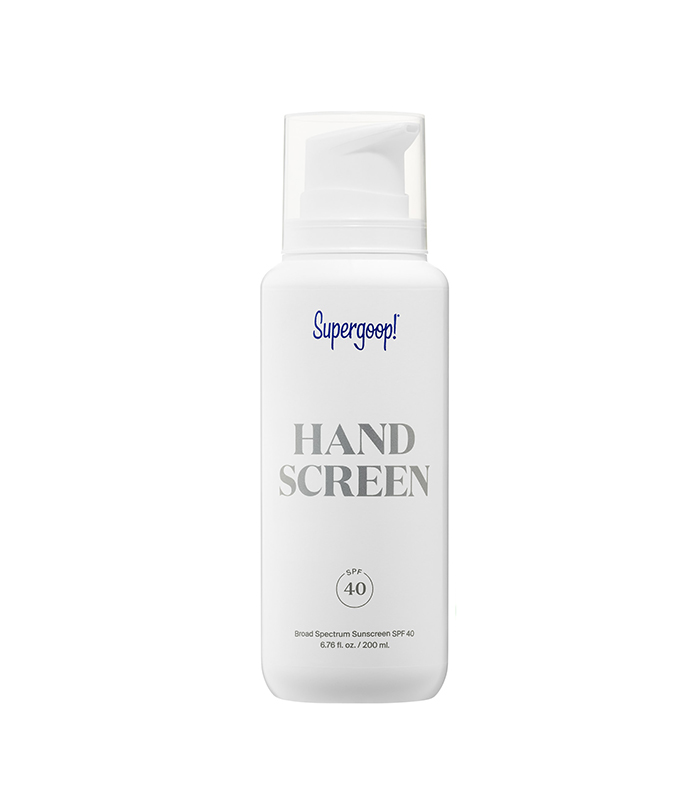
Another pick from Gmyrek, this hand sunscreen features ingredients to hydrate and protect the skin, like sea buckthorn fruit extract, meadowfoam seed oil, and argan oil. It's also vegan, cruelty-free, and reef-safe.
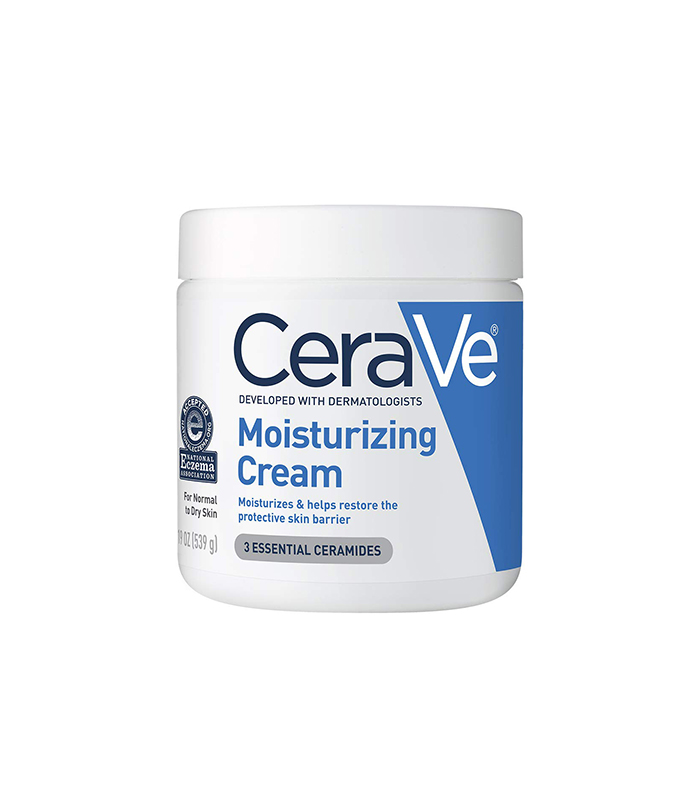
Use this ultra-moisturizing cream at night. "It's great for the entire body," Gmyrek says. "Ceramides heal the skin barrier and moisturize, and it also contains hyaluronic acid to hydrate skin. It's also a great value."
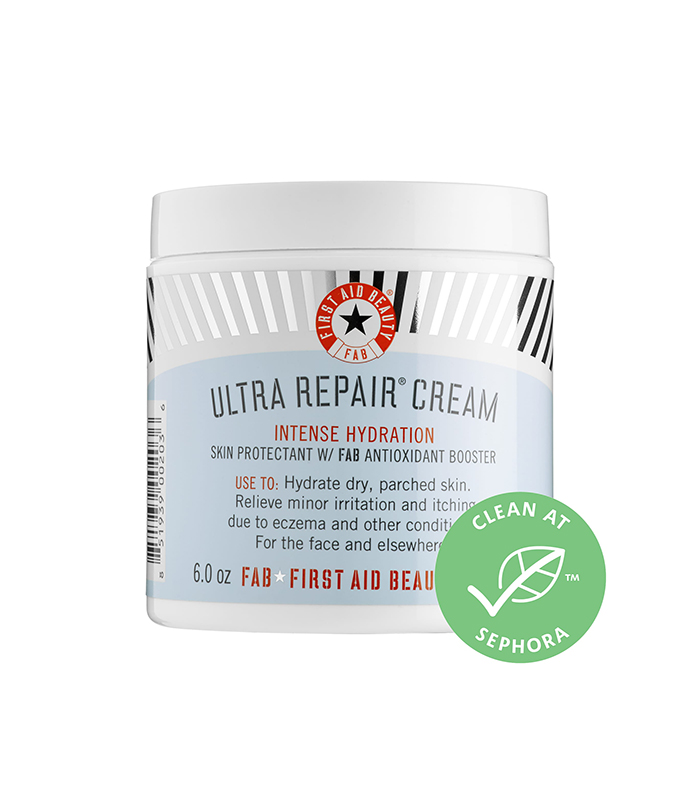
First Aid Beauty's Ultra Repair Cream can be used all over the face and body, too. It's formulated to provide relief for extremely dry skin and eczema, with ingredients like colloidal oatmeal, shea butter, and allantoin.

Ointments are especially helpful if you're dealing with very dry, cracked, and peeling skin. This balm is made from plant-based ingredients like glycerin, castor seed oil, and castor wax. You can also use it to treat burns, scrapes, and post-procedure skin.
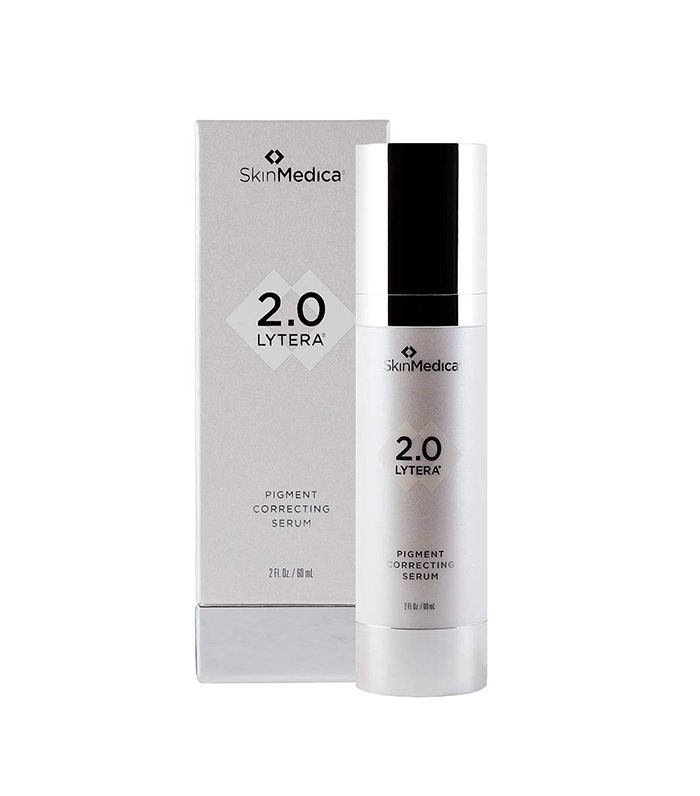
If discoloration is your concern, Gmyrek suggests adding this serum in the mornings instead of applying an antioxidant. "It has tranexamic acid and resorcinol to lighten brown pigment," she adds.
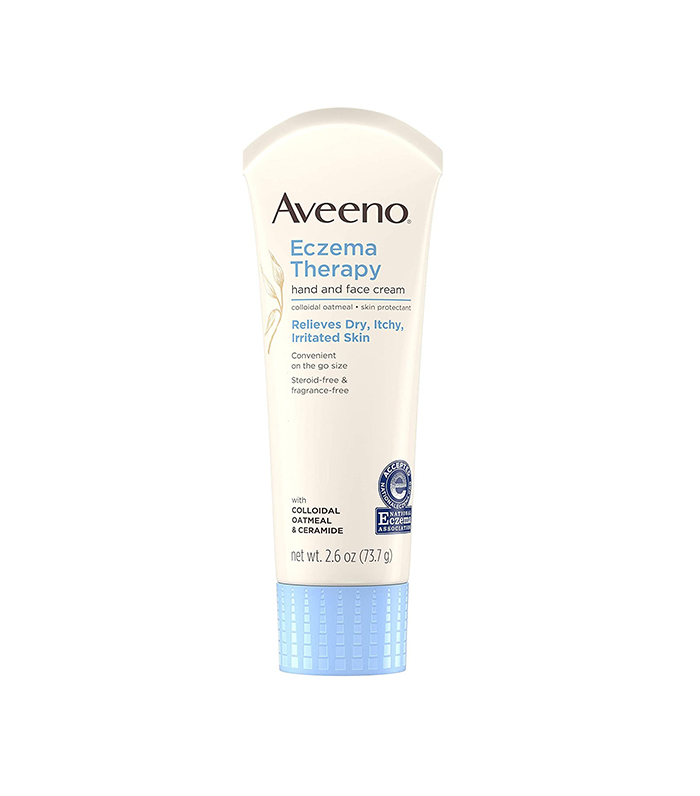
Another suggestion from Gmyrek, this cream contains colloidal oatmeal and ceramide to heal dry cracked skin and hydrate hands. It's also non-greasy and steroid- and fragrance-free.
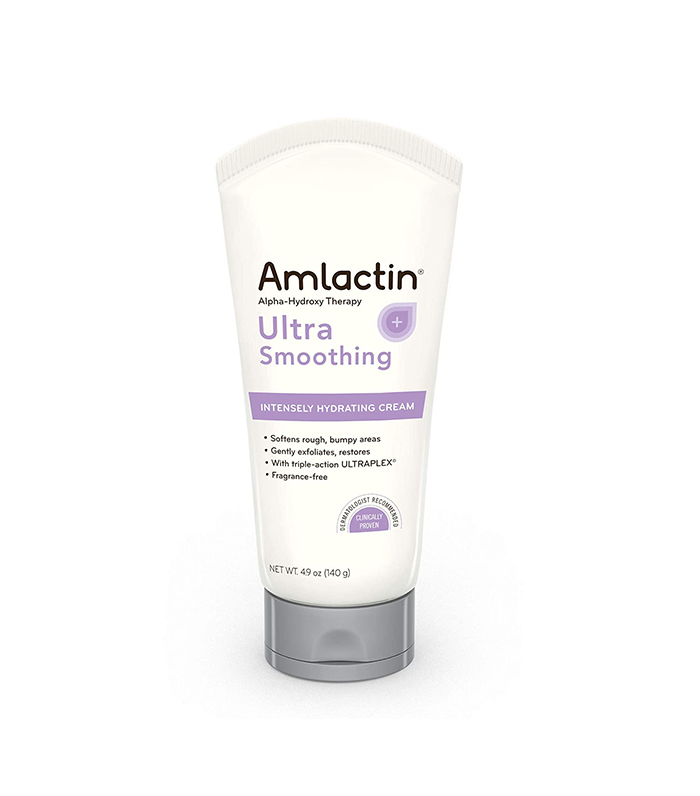
AmLactin's cream contains lactic acid to exfoliate dead skin cells, which can help the skin appear more youthful. It also works to lock in moisture and relieve dry skin.
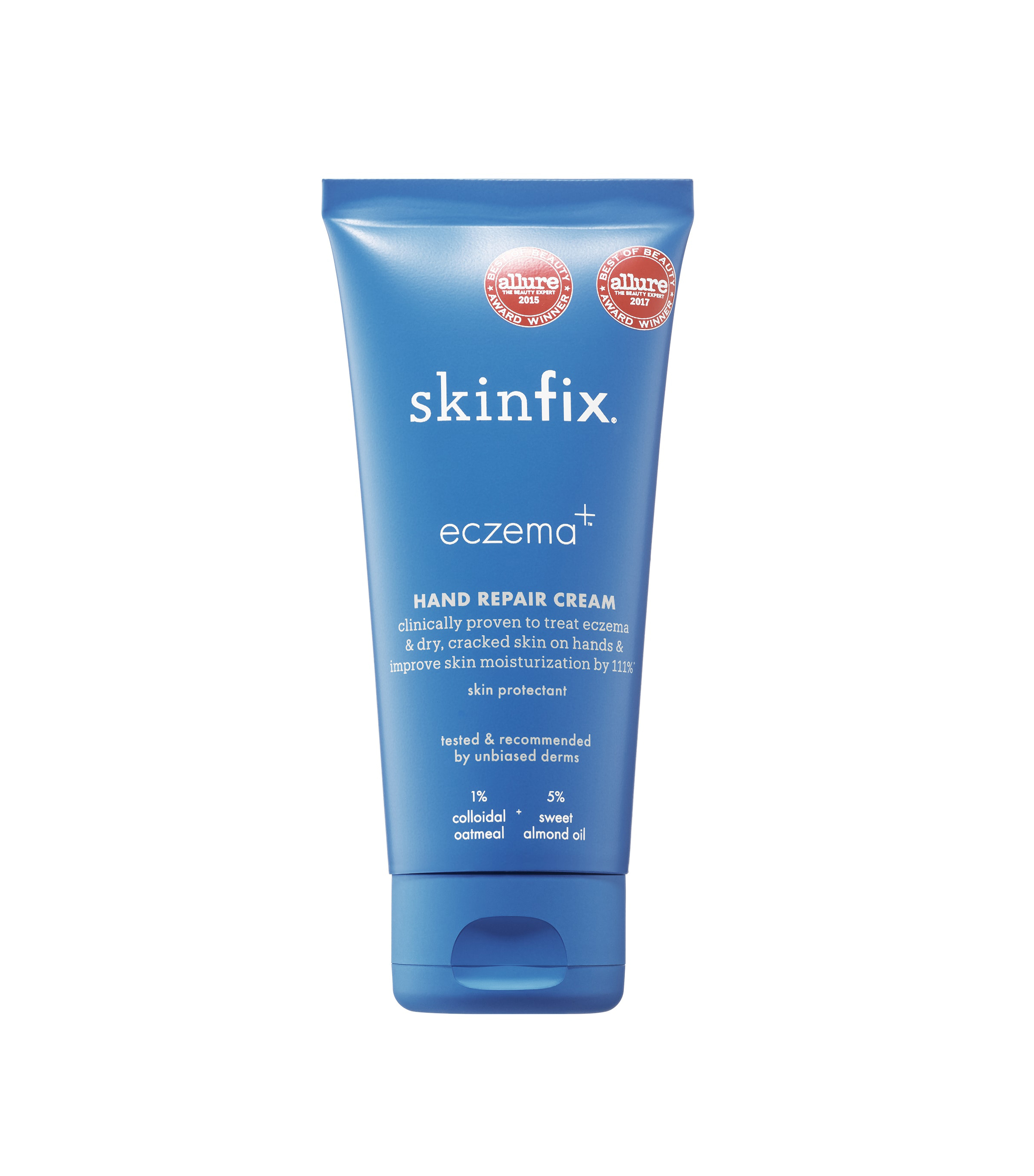
Gmyrek says this hand repair cream contains colloidal oatmeal to heal and almond oil to emolliate. And it's not just for eczema—it will soothe super-dry skin, too.
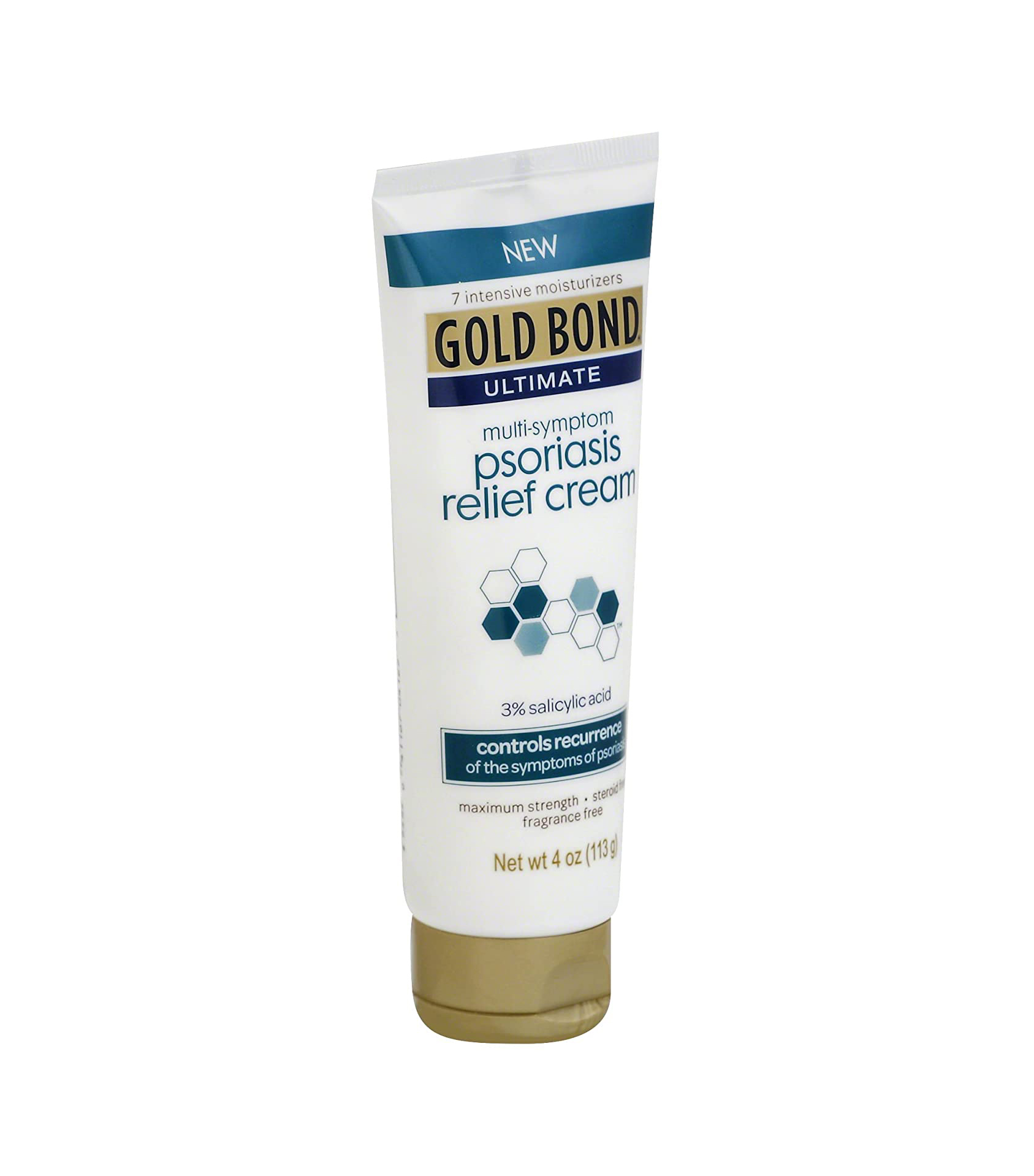
Even if you don't have psoriasis, Gmyrek suggests using this cream that contains 3% salicylic acid and helps to remove dead skin cells and hydrate. You can use this on other parts of your body as well.
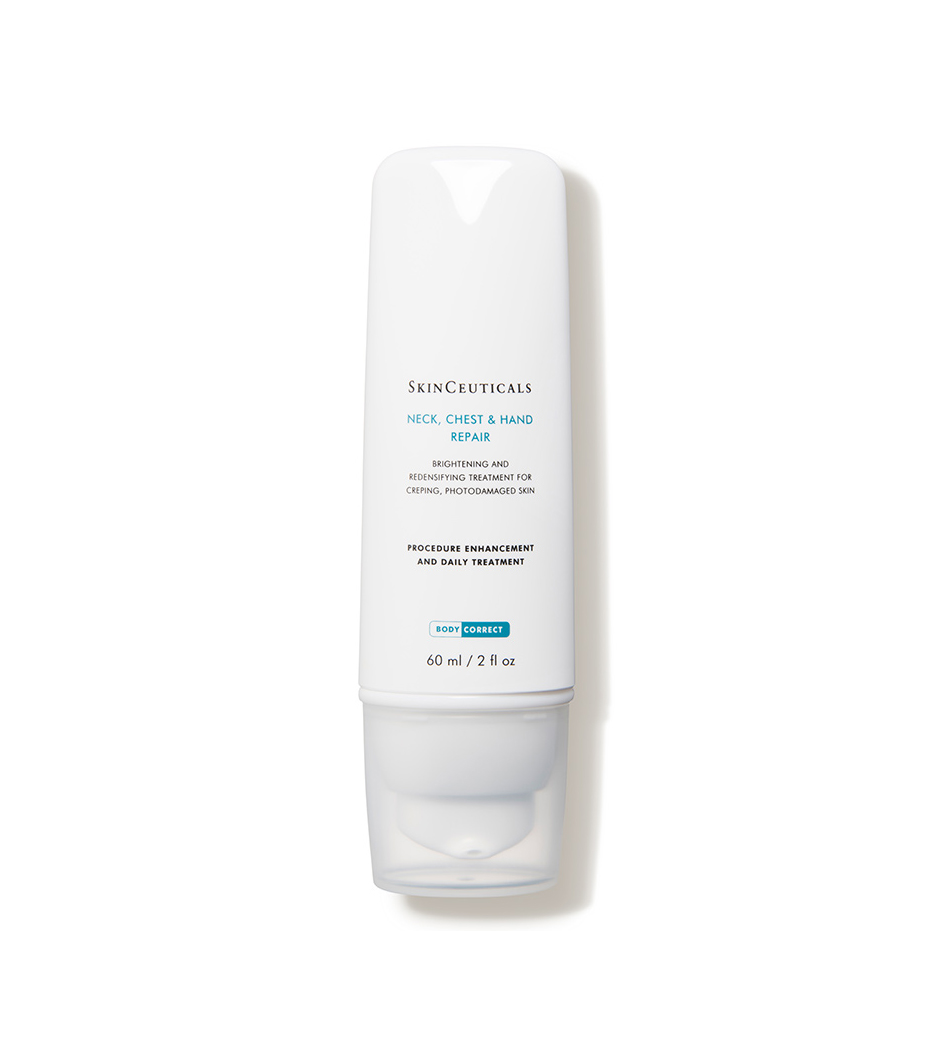
SkinCeuticals' lotion is another option if discoloration or brown spots are a concern, Gmyrek says. "It contains propionic acid and a natural seed extract which fade age spots and improve skin texture," she adds.
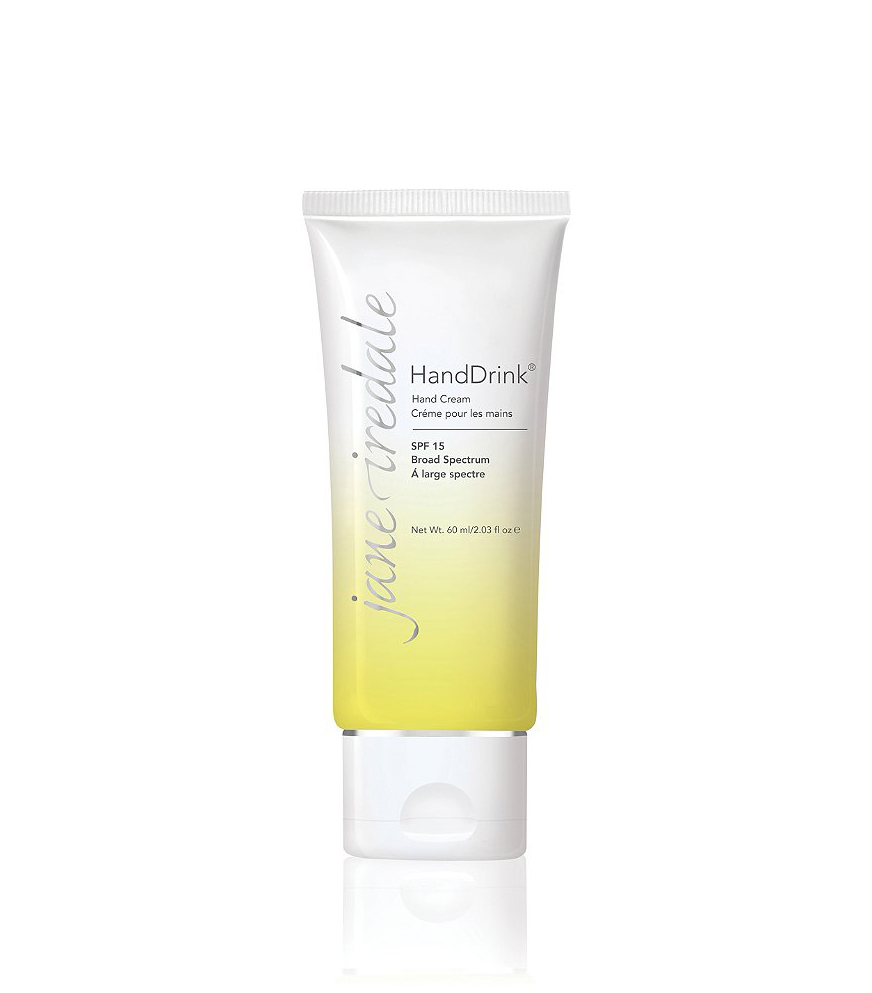
This hydrating hand cream contains SPF 15 broad-spectrum sunscreen and won't leave your hands greasy or oily. Its other ingredients include lemongrass oils, liposomal encapsulated apple extract and white and green tea extracts to nourish, brighten, and protect the skin.
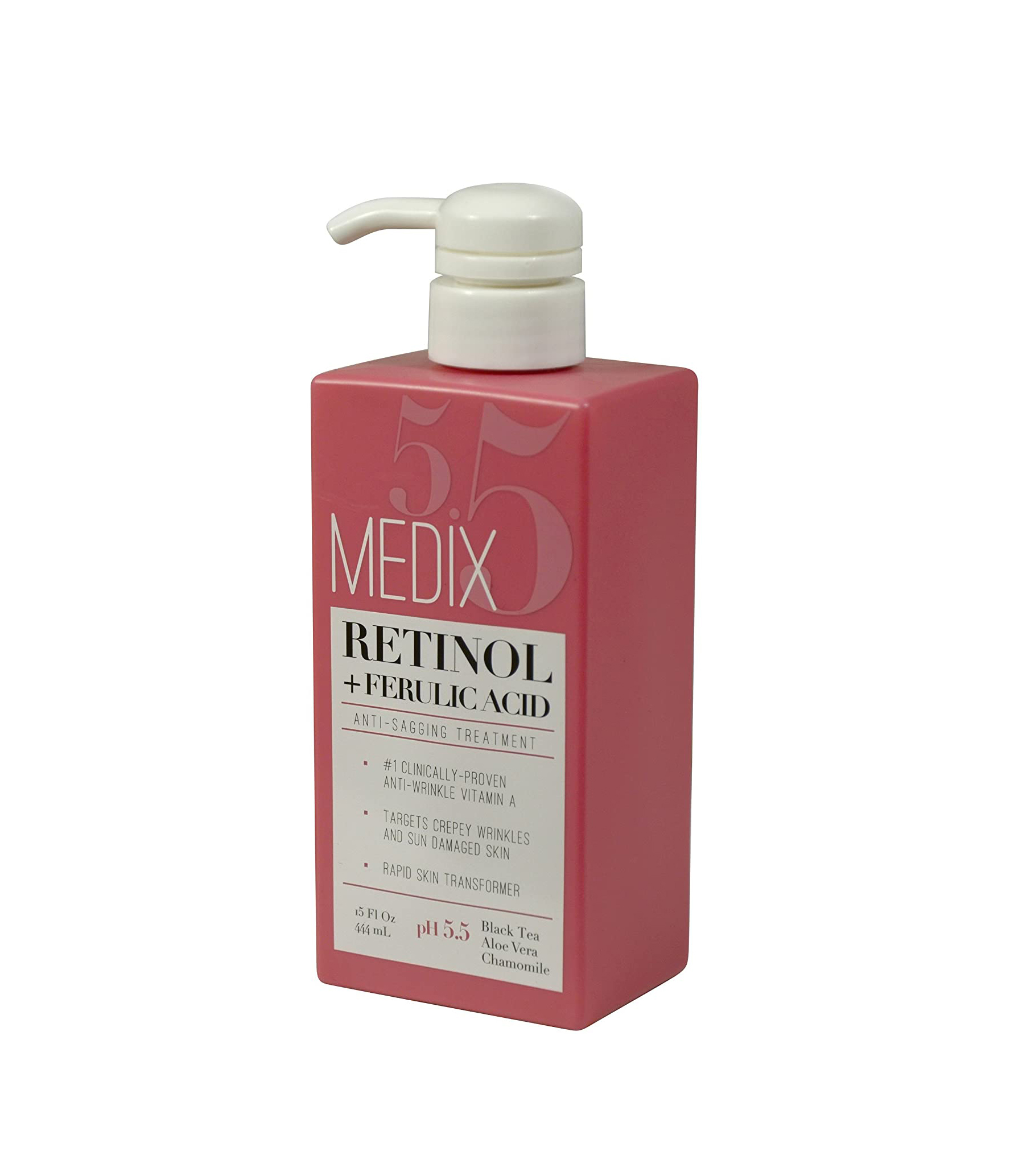
Medix 5.5's cream contains vitamin A to decrease the appearance of wrinkles and fine lines, plus ferulic acid that works to improve sun damage. The formula also improves elasticity and dark spots. You can use it on your face, neck, and body, too.
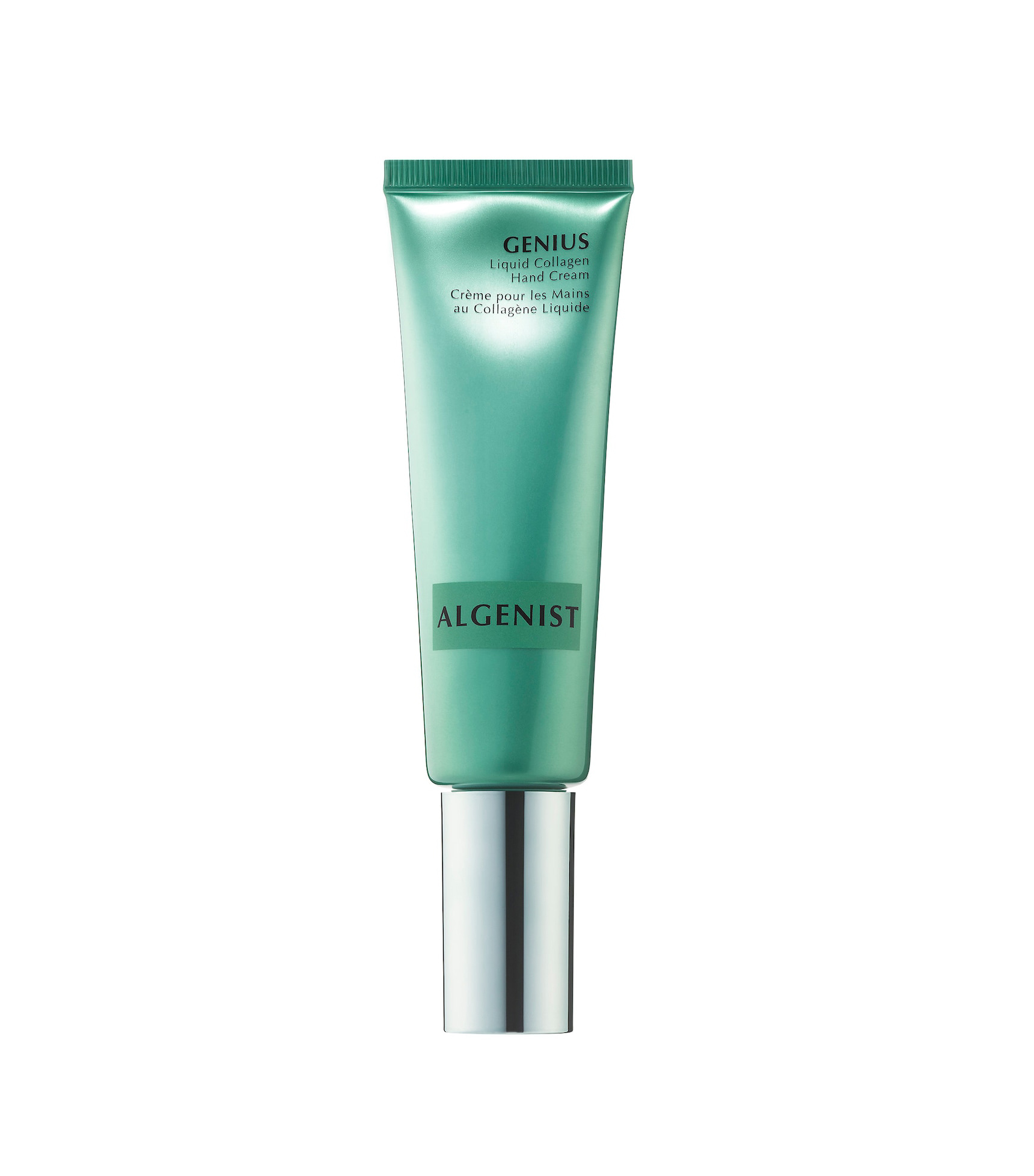
Improve the appearance of dark spots with this vegan collagen hand cream. Other ingredients like alguronic acid and vitamins C and E work to brighten and rejuvenate the skin.
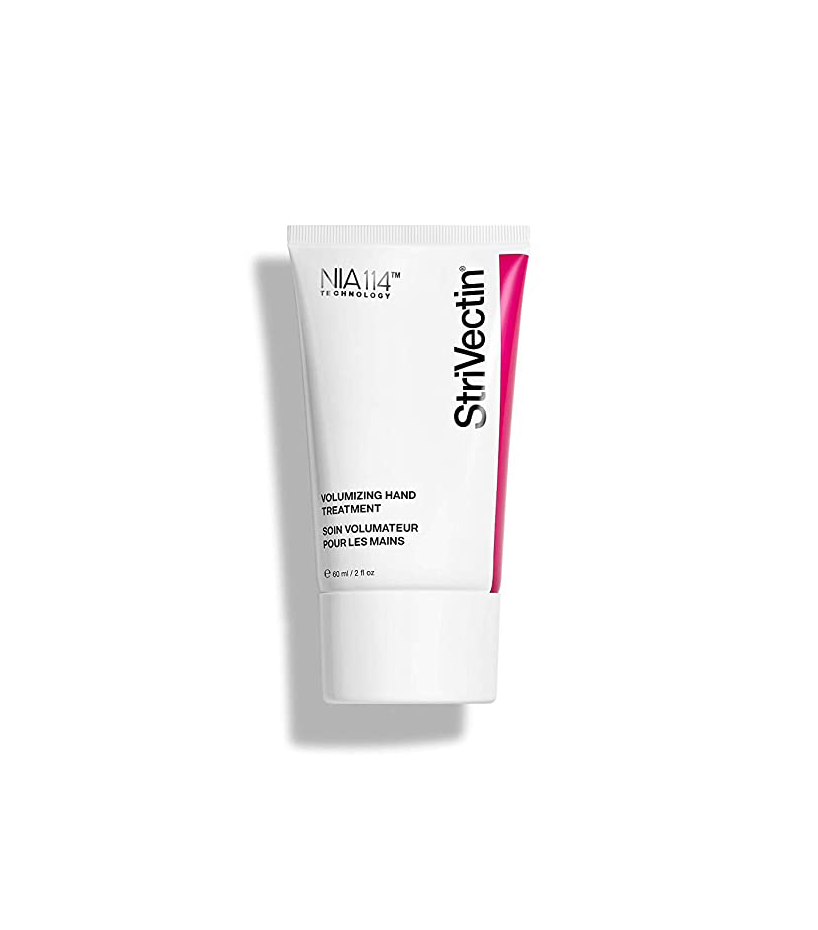
Formulated hyaluronic acid, vitamin E, and shea butter, this hand cream works to strengthen the skin barrier, soften hands, minimize discoloration, and improve the appearance of wrinkles and crepey skin. It's recommended to use this twice daily.
Next up, my 68-year-old mom says these anti-aging night creams are so worth it.
This article was originally published at an earlier date and has been updated.
Sarah is lifestyle writer and editor with over 10 years of experience covering health and wellness, interior design, food, beauty, and tech. Born and raised in Los Angeles, she attended New York University and lived in New York for 12 years before returning to L.A. in 2019. In addition to her work at Who What Wear, she held editor roles at Apartment Therapy, Real Simple, House Beautiful, Elle Decor, and The Bump (sister site of The Knot). She has a passion for health and wellness, but she especially loves writing about mental health. Her self-care routine consists of five things: a good workout, “me” time on the regular, an intriguing book/podcast/playlist to unwind after a long day, naps, and decorating her home.
